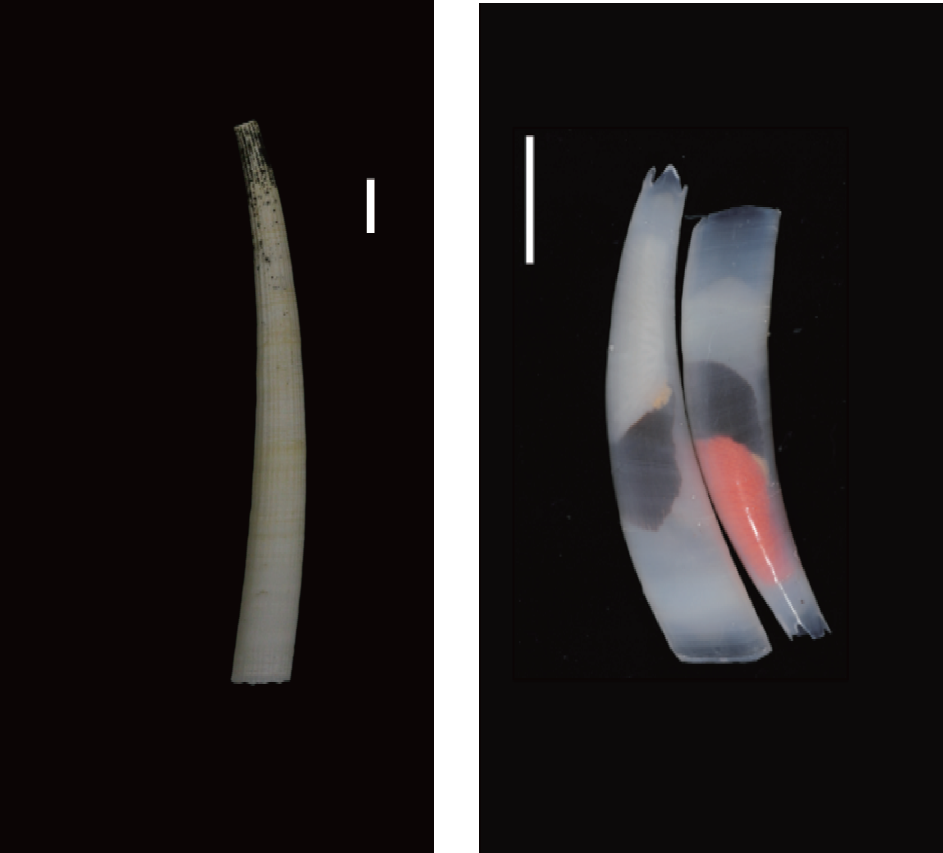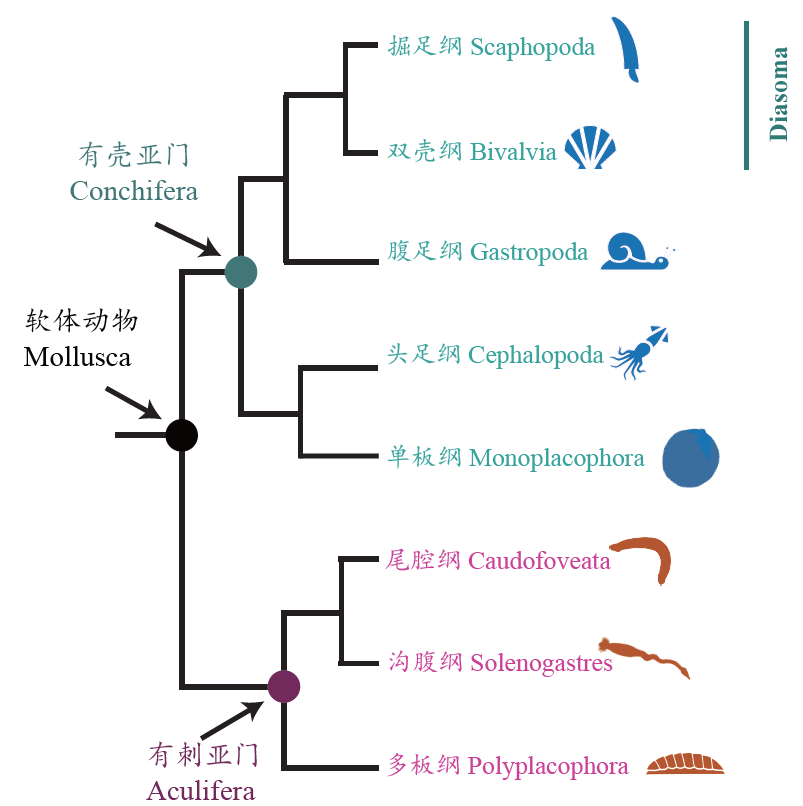
Accurate phylogenetic trees are fundamental to evolutionary and comparative biology, but the almost simultaneous emergence of major animal phyla and diverse body plans during the Cambrian Explosion poses major challenges to reconstructing deep metazoan phylogenetic relationships.
This is particularly true for the second largest phylum, Mollusca, whose major lineages originated in the Cambrian period. The diverse fossil record, extreme morphological disparity among the eight living classes, and dramatic conflict among phylogenetic hypotheses due to diverse paleontological, morphological and molecular evidence hinder the understanding of molluscan phylogeny.
Recently, researchers from China, the U.S.A. and the U.K. have sequenced the first genomes of Scaphopoda or "tusk shells"—among the rarest and least-studied members of Mollusca—and found unprecedented ancient incomplete lineage sorting (ILS) that occurred during early molluscan cladogenesis.
These findings provide new insights into early molluscan evolution and explain why resolving molluscan class-level relationships has been a great challenge to evolutionary biologists.
The study was published in PNAS on Sept. 18.
The researchers resolved the longstanding debate regarding the phylogenetic placement of Scaphopoda. Scaphopods exhibit a mosaic of morphological and developmental features resembling those of other lineages, such as tentacles resembling the arms of cephalopods, a unique manner of shell ontology similar to that of bivalves, and a partially degenerated head that seemingly represents an intermediate state between bivalves ("headless") and gastropods (with a well-developed head).
These features have been variously interpreted by morphologists as evidence for different conflicting phylogenetic hypotheses, and phylogenomic studies to date have failed to confidently place Scaphopoda in the molluscan tree, thus making its phylogenetic placement a major question.
However, by taking ancient ILS into consideration, the current study has resolved the debate. Specifically, it has revealed that Scaphopoda is the sister lineage of Bivalvia (Diasoma concept), a hypothesis first proposed based on morphology 50 years ago but not supported by molecular phylogenetic studies to date.
This finding, together with careful molecular clock analysis, prompts re-interpretation of many important but controversial Cambrian fossils that show similarities to both bivalves and scaphopods. For instance, the laterally compressed Early Cambrian fossils Anabarella, Watsonella and Mellopegma are now proposed to be stem diasomes. It also provides important insights into how the unique body plans of scaphopods and bivalves evolved.
"Our work addresses the long-disputed phylogenetic placement of Scaphopoda and may revolutionize understanding of molluscan early evolution," said Dr. SONG Hao from the Institute of Oceanology of the Chinese Academy of Sciences (IOCAS), first author of the study.
The study indicates that the impact of ILS in the context of reconstructing Cambrian-age radiations is under-appreciated and thus calls for exploration of ancient ILS in the context of other recalcitrant nodes in deep metazoan phylogeny.

Fig. 1 The two lineages of tusk shells, Gadilida and Dentaliida (Image by IOCAS and Nick Roberts)

Fig. 2 The Diasoma concept recovered in this study (Image by IOCAS)

86-10-68597521 (day)
86-10-68597289 (night)

86-10-68511095 (day)
86-10-68512458 (night)

cas_en@cas.cn

52 Sanlihe Rd., Xicheng District,
Beijing, China (100864)

